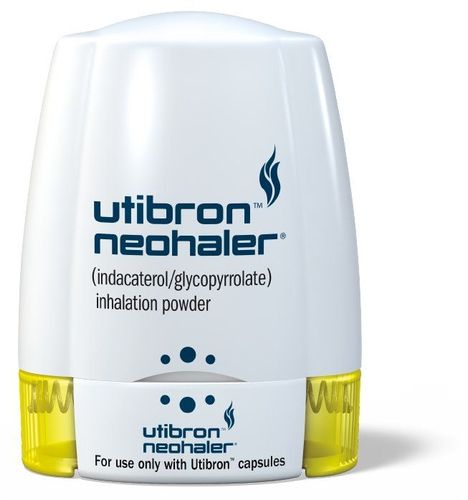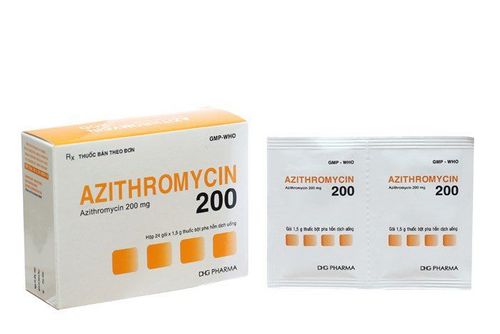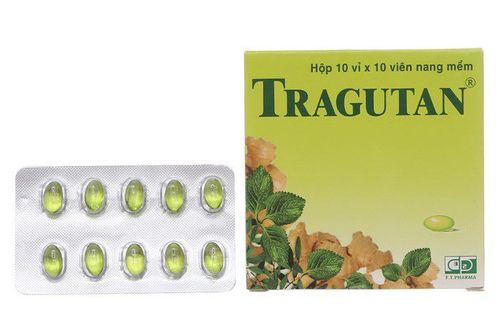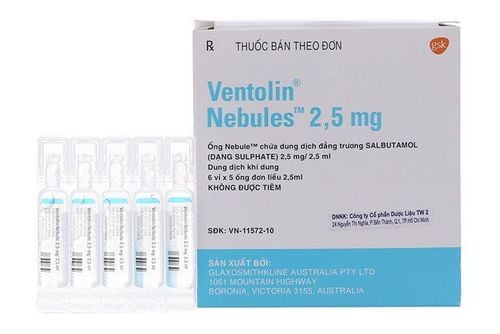This is an automatically translated article.
Seretide 25/50 spray comes in aerosol form, in a spray bottle. The drug, which contains salmeterol and fluticasone, is used to treat asthma and chronic obstructive pulmonary disease.
1. What does Seretide 25/50 do?
Seretide 25/50 contains salmeterol and fluticasone propionate with different mechanisms of action. Specifically, salmeterol effectively protects against histamine-induced bronchospasm, producing a longer-lasting bronchodilator effect. Inhaled fluticasone propionate has anti-inflammatory activity, reducing symptoms and exacerbations of asthma, without the adverse effects associated with systemic corticosteroids.
Seretide 25/50 spray is indicated in the following cases:
Treatment of asthma: Indicated in the routine treatment of asthma (reversible airway obstruction) including bronchial asthma in adults and children from 4 years old and up; Treatment of Chronic Obstructive Pulmonary Disease (COPD): Treatment to maintain airway obstruction and reduce exacerbations in people with COPD, reducing all-cause mortality.
2. Instructions for using Seretide 25/50
Patients need to take the drug regularly even in the absence of symptoms to ensure optimal treatment effect. Patients need to see a doctor regularly to determine the optimal amount of Seretide to use.
2.1 How to take Seretide 25/50 Seretide 25/50 is administered by inhalation through the mouth.
Instructions for using Seretide 25/50 aerosol:
Test the aerosol: Before the first use, the patient should remove the mouthpiece cap (by gently squeezing the sides of the cap), shake the inhaler well, Hold spray bottle between fingers, spray into the air until the counter reads 120 to make sure the sprayer is working properly. The spray bottle should be shaken before spraying. If the inhaler is not used for a week or longer, remove the mouthpiece cap, shake the spray bottle well, and spray once into the air. Each time it is started, the number on the aerosol counter will decrease by 1. In some cases, dropping the spray can also cause the counter to work.
Use aerosol: Take the following steps:
Tower the mouthpiece cap (By squeezing the cap sides gently) Check the inside and outside of the inhaler, including the mouthpiece, to make sure the sturdy, non-loose parts Shake the spray bottle well, making sure to remove loose objects and to help mix the ingredients in the spray bottle Hold the spray upright between your fingers, place your thumb on the bottom, side under the mouthpiece; Exhale as much as you feel comfortable, put the mouthpiece in your mouth between your teeth, close your lips around (do not bite the mouthpiece); Start inhaling through the mouth, press down on the top of the inhaler to release the active ingredients in it, inhale deeply and steadily; While holding your breath, remove the inhaler from your mouth, relaxing your finger at the top of the spray. Continue holding your breath as long as you can; If administering a second dose, you should hold the inhaler upright, wait about 30 seconds, and then repeat steps 3 - 7; Gargle with clean water, spit it out; Close the spray bottle cap correctly. If the cap does not match, rotate the cap in the opposite direction and try again, without applying excessive force. Note:
Do not perform steps 5, 6, 7 in haste. You need to start inhaling as slowly as possible before operating the inhaler. Practice using it in front of a mirror for the first few times. If you see steam coming out of the top of the spray or spreading to the corners of your mouth, you should start over from step 2; When the aerosol counter returns to 020, you should consider replacing the potion with a new one. When the counter reaches 000, you need to replace the potion with a new one; If the doctor has other instructions for use, the patient should follow the doctor's advice carefully. 2.2 Seretide Spray Dosage 25/50 Asthma Need to be titrated to the lowest dose that maintains effective control of symptoms. When symptom control is maintained at twice-daily Seretide, the dose may be titrated to the lowest effective dose of once-daily. Patients should be given a form of Seretide with a fluticasone propionate concentration appropriate for the course of the disease.
If the patient's asthma is not adequately controlled with inhaled corticosteroid therapy alone, alternative therapy with Seretide with an equivalent corticosteroid dose may improve asthma control. In patients whose asthma is controlled by inhaled corticosteroids alone, replacement therapy with Seretide will reduce the corticosteroid dose while providing effective asthma control.
People 12 years of age and older 2 sprays of 25mcg salmeterol and 250mcg fluticasone propionate x 2 times/day (Seretide 25/250). Maximum recommended dose is 50/500 x 2 times/day
Chronic Obstructive Pulmonary Disease Recommended dose for adults: 2 sprays of 25mcg salmeterol and 250mcg fluticasone propionate twice daily. At a dose of 50/500 mcg twice daily, Seretide has been shown to reduce all-cause mortality.
Special patient groups No dose adjustment of Seretide is required for the elderly, patients with hepatic or renal impairment.
Note: The dosage given above is for reference only. The doctor will base on the patient's condition and progress to prescribe the appropriate dose.
Overdose: When the drug overdose, the patient has rum, headache, increased systolic blood pressure, tachycardia and hypokalemia. In addition, the patient may have adrenal suppression. Overdose patients receive supportive treatment, with appropriate monitoring if necessary.
Missed dose: When forgetting to take a dose of Seretide, the patient should take it as soon as possible. If it is almost time for your next dose, skip the missed dose and take your next dose as scheduled.
3. Seretide 25/50 side effects
When using Seretide, patients may experience some unwanted side effects such as:
Infections and parasitic infections: Candida infections of the mouth, throat and esophagus; pneumonia (in people with COPD), bronchitis; Immune system disorders: Hypersensitivity skin reactions, dyspnea, anaphylactic reactions, angioedema (face, mouth, pharynx, pharynx), bronchospasm; Endocrine disorders: Cushing's syndrome, growth retardation in children and adolescents, adrenal insufficiency, decreased bone mineral density; Metabolic and nutritional disorders: Hypokalemia, hyperglycemia; Psychiatric disorders: Anxiety, sleep disturbance, behavioral changes (increased activity and arousal), depression, agitation; Nervous system disorders: Tremor, headache; Eye disorders: Glaucoma and cataracts; Heart disorders: Palpitations, atrial fibrillation, angina attacks, arrhythmias; Respiratory, thoracic and mediastinal disorders: Nasopharyngitis, hoarseness, difficulty in pronunciation, sinusitis, throat irritation, bronchospasm; Skin and subcutaneous tissue disorders: Bruises of the skin; Musculoskeletal and connective tissue disorders: Arthralgia, cramps, fractures (trauma), myalgia. When experiencing side effects of Seretide, patients should stop using and notify their doctor for timely treatment.
4. Note when using Seretide 25/50
Seretide 25/50 spray is contraindicated in the following cases:
People with a history of hypersensitivity to the components of the drug; Initial treatment of asthma, asthma exacerbations, and COPD when active treatment is required. Precautions while using Seretide 25/50:
Do not start the drug in patients who are in the worsening phase or exacerbation of asthma, COPD is at risk of life. Seretide 25/50 is not used to relieve acute symptoms but requires a short-acting bronchodilator. Increased use of short-acting bronchodilators to relieve symptoms may be a sign that Seretide is not controlling the disease well, and the patient should be reevaluated; Seretide 25/50 should not be used more often than recommended, at higher doses than recommended, or used concomitantly with LABA-containing drugs to avoid the risk of overdose; Patients treated with Seretide 25/50 may develop local infections of the mouth and throat caused by Candida. In the presence of infection, appropriate systemic (oral) or topical antifungal therapy is required, with continued Seretide therapy. Patients who rinse their mouth with water and spit it out after inhalation can reduce the risk of candida infection in the oropharynx; The risk of pneumonia is increased with the use of Seretide 25/50 in patients with COPD. Be wary of the possibility of pneumonia in people with COPD because the symptoms are quite similar; The possibility of impaired adrenal response may occur in patients switching from oral steroid therapy to inhaled fluticasone propionate. Therefore, it is necessary to treat with caution and regularly monitor adrenocortical function. When initiating fluticasone propionate, systemic steroids require gradual dose reduction and discontinuation; Inhaled corticosteroids are absorbed into the circulation in susceptible patients, patients treated with Seretide 25/50 should beware of systemic corticosteroid effects: drug-induced Cushing, adrenal suppression. If such effects occur, the dose of Seretide should be reduced gradually, appropriately, considering other symptomatic asthma measures; Drug Seretide 25/50 interacts with strong inhibitors of cytochrome P450 3A4 should be cautious when combining these drugs; Immediately after taking the drug, the patient may experience paradoxical bronchospasm or symptoms of laryngeal edema, wheezing, choking, etc. In this case, the patient should immediately take 1 medicine. Short and rapid inhaled bronchodilators. At the same time, discontinue use of Seretide 25/50 immediately, alternative treatment if necessary; Immediate hypersensitivity reactions such as anaphylaxis, urticaria, angioedema, rash, hypotension, bronchospasm,... may occur after using Seretide 25/50; Seretide 25/50 should be used with caution in patients with cardiovascular disorders (especially arrhythmias, hypertension, coronary insufficiency) because of possible convulsions, hypertension, angina pectoris, arrhythmias. tachycardia, restlessness, hypotension, headache, tremor, dizziness, irritability, fatigue, nausea, insomnia,...; Appropriate monitoring and treatment in patients at high risk for bone mineral density loss: Menopause, prolonged immobility, poor nutrition, tobacco use, advanced age, family history of osteoporosis, use of use drugs to reduce bone mass,...; The drug may decrease growth when given to children. The growth of pediatric patients should be monitored when using Seretide 25/50 regularly. To minimize this side effect, it is necessary to adjust the dose to the lowest effective dose; Glaucoma, increased intraocular pressure, and cataracts may occur in asthmatic and COPD patients following prolonged use of Seretide 25/50 spray. Therefore, it is necessary to closely monitor when using the drug in patients with vision changes or a history of glaucoma, increased intraocular pressure, cataracts; If Seretide 25/50's asthma control becomes poor, see a doctor immediately; People with asthma should not stop using Seretide 25/50 spray suddenly because it can lead to exacerbations. The dose should be gradually reduced under the supervision of a physician. Patients with COPD, if stopping drug treatment, can also cause a loss of symptom control, so they should be closely monitored for their health; Use Seretide 25/50 with caution in patients at risk of hypokalemia; Use caution when prescribing Seretide to patients with a history of diabetes; Drivers and machine operators should be aware of the undesirable effects of Seretide 25/50 such as headache, joint pain, muscle pain, injury, cramps, angina, tachycardia, spasms. bronchi, shortness of breath, anxiety,...; Consider the use of Seretide 25/50 in pregnant and lactating women.
5. Seretide drug interactions 25/50
Some Seretide drug interactions 25/50 patients should note:
Avoid concomitant use of both selective and non-selective beta-blockers (unless there are compelling reasons); Ritonavir (a potent inhibitor of cytochrome P450 3A4) can increase plasma concentrations of fluticasone propionate, causing a significant decrease in serum cortisol concentrations. During the use of Seretide 25/50, there were drug interactions in patients receiving inhaled fluticasone propionate and ritonavir, causing systemic effects including Cushing's syndrome and adrenal suppression. Therefore, the concomitant use of these two drugs should be avoided (unless prescribed by a doctor after weighing the benefits and risks); Use caution when using strong inhibitors of cytochrome P450 3A4 such as ketoconazole because of increased systemic fluticasone propionate concentrations; Concomitant use of ketoconazole and salmeterol (1 active ingredient in Seretide 25/50) increases plasma concentrations of salmeterol, possibly prolonging the QTc interval; Seretide 25/50 spray should be used with caution in patients being treated with IMAOS or tricyclic antidepressants (or recently stopped using these drugs within 2 weeks) because the effects of salmeterol on the vascular system can be dangerous. increase; ECG changes and hypokalemia due to the use of potassium-sparing diuretics may be worsened with the use of Seretide 25/50 (especially if the recommended dose is exceeded). Therefore, caution should be exercised when Seretide 25/50 is co-administered with potassium-sparing diuretics. Seretide 25/50 spray has a rather complicated use. Patients should follow all doctor's instructions on how to use, dose, time to take the drug, ... to ensure effective treatment, avoid unpredictable side effects.
Please dial HOTLINE for more information or register for an appointment HERE. Download MyVinmec app to make appointments faster and to manage your bookings easily.













